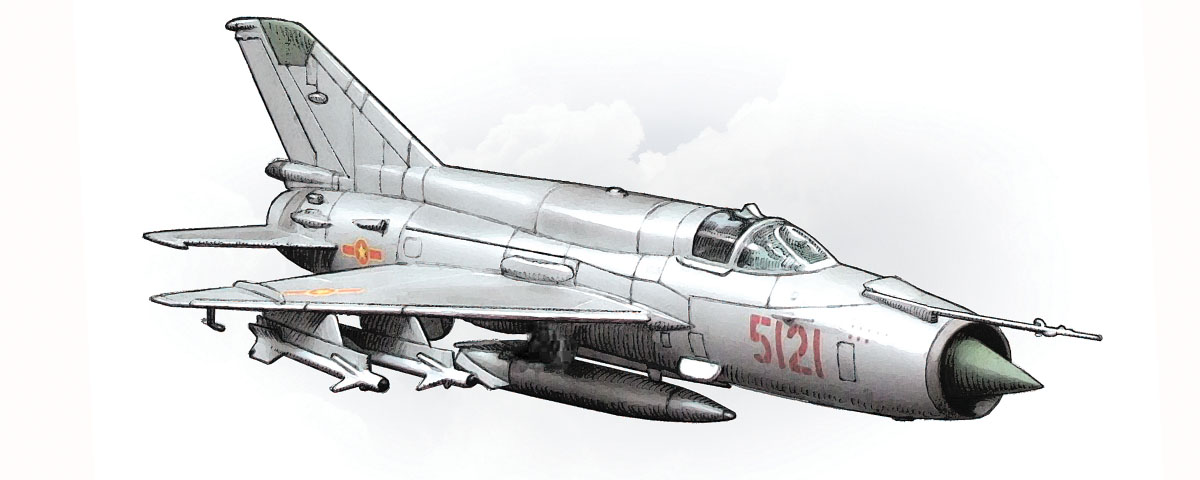The Mikoyan-Gurevich concept of a tailed delta wing interceptor with Mach 2 capability first flew in 1955, entered Soviet service in 1959 and remained in first-line service for more than 30 years—a record for progressive development, longevity and overall success paralleling the career of its frequent adversary, the much larger and more complex McDonnell F-4 Phantom II.
MiG-21MF Specs
- Wingspan: 23 ft.
- Length: 47 Ft. 6 in.
- Height: 13 ft.
- Weight: Empty 11,400 lbs; Max. 17,086 lbs
- Max. Speed: 1,352 mph
- Power: One Tumansky R-13F2S-300 turbojet, 14,320 lbs
- Armament: Four R-3S infrared-seeking missiles, one GSh-23L twin-barrel cannon
- Range: 1,044 miles
In addition to 10,645 MiG-21s manufactured from 1959 to 1985 in the Soviet Union, 657 were built under licensing agreements in India, 194 in Czechoslovakia and an undetermined number in China as the Chengdu J-7 from 1964 to 2013, making the plane the most produced Mach 2 aircraft in history.
More than 50 countries have used the MiG-21s—and many still do. Among the air arms that put MiG-21s to active use was North Vietnam.
The subsonic MiG-17 had defended North Vietnam’s air space astonishingly well since 1964, but it was clearly at a disadvantage against faster opponents such as the F-105D Thunderchief, F-8 Crusader and F-4 Phantom.
In April 1966, the Soviets shipped the first MiG-21F-13s (given the designation “Fishbed-C” by NATO) to North Vietnam. The planes entered service with the 921st Fighter Regiment. Although the 921st had been flying MiG-17s since February 1964, its pilots initially had trouble putting their Soviet training in Mach 2 flying, radar and air-to-air missile tactics to practical use in combat. Losses exceeded success to a discouraging degree.
By the end of 1967, however, the North Vietnamese had learned their hard lessons, and they adjusted their tactics to make the MiG-21 an effective element in a coordinated triad defense of fighters, surface-to-air missiles and anti-aircraft artillery. North Vietnamese forces also received a succession of upgraded models with improved performance and radar.
On Feb. 3, 1972, the 927th Fighter regiment was formed with MiG-21PFMs (Fished-F in NATO parlance), while the 921st re-equipped with the more advanced MiG-21MFs (Fished-J). Both units were heavily engaged in the climactic air battles of Operation Linebacker I and II that year, including claims on two B-52 bombers that the Americans still attribute to SAMs.
By the time the United States ceased direct involvement in Vietnam in January 1973, MiG-21 pilots were credited with a total of 134 American aircraft, including pilotless drones, and produced 13 aces, led by Nguyen Van Coc with seven planes and two drones. Only 64 American aircraft have been positively matched to the North Vietnamese MiG-21 claims.






